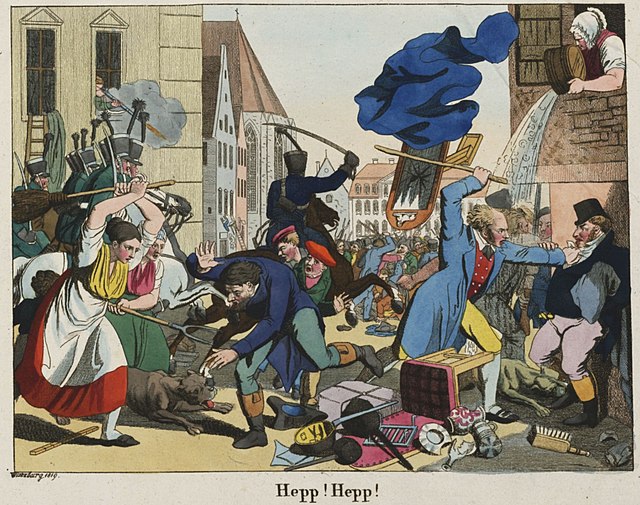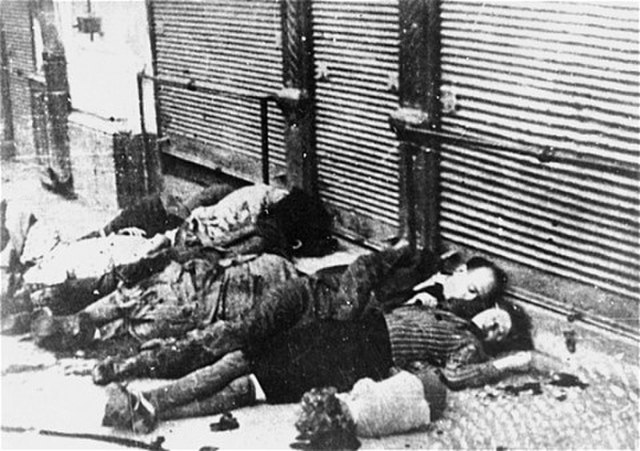Pogroms in the Russian Empire
Pogroms in the Russian Empire were large-scale, targeted, and repeated anti-Jewish rioting that began in the 19th century. Pogroms began to occur after Imperial Russia, which previously had very few Jews, acquired territories with large Jewish populations from the Polish–Lithuanian Commonwealth and the Ottoman Empire from 1772 to 1815. These territories were designated "the Pale of Settlement" by the Imperial Russian government, within which Jews were reluctantly permitted to live. The Pale of Settlement primarily included the territories of Poland, Ukraine, Belarus, Bessarabia, Lithuania and Crimea. Jews were forbidden from moving to other parts of European Russia, unless they converted from Judaism or obtained a university diploma or first guild merchant status. Migration to the Caucasus, Siberia, the Far East or Central Asia was not restricted.
1881 pogrom in Kiev
Photo believed to show the victims, mostly Jewish children, of a 1905 pogrom in Yekaterinoslav (today's Dnipro)
Home at last by Moshe Maimon. An invalid Jewish soldier who, having returned home from the Russo-Japanese War, finds the bodies of his family who had died at the hands of pogromists. A rabbi is saying Kaddish for a member of the household who was killed.
Herman S. Shapiro. "Kishinever shekhita, elegie" (Kishinev Massacre Elegy). Musical composition in New York attacking the Kishinev pogrom, 1904.
A pogrom is a violent riot incited with the aim of massacring or expelling an ethnic or religious group, particularly Jews. The term entered the English language from Russian to describe 19th- and 20th-century attacks on Jews in the Russian Empire. Similar attacks against Jews which also occurred at other times and places became known retrospectively as pogroms. Sometimes the word is used to describe publicly sanctioned purgative attacks against non-Jewish groups. The characteristics of a pogrom vary widely, depending on the specific incident, at times leading to, or culminating in, massacres.
The Hep-Hep riots in Würzburg, 1819. On the left, two peasant women are assaulting a Jewish man with pitchfork and broom. On the right, a man wearing spectacles, tails and a six-button waistcoat, "perhaps a pharmacist or a schoolteacher," holds a Jewish man by the throat and is about to club him with a truncheon. The houses are being looted. A contemporary engraving by Johann Michael Voltz.
Victims of a pogrom in Kishinev, Bessarabia, 1903
A massacre of Armenians and Assyrians in the city of Adana, Ottoman Empire, April 1909
Iași pogrom in Romania, June 1941








